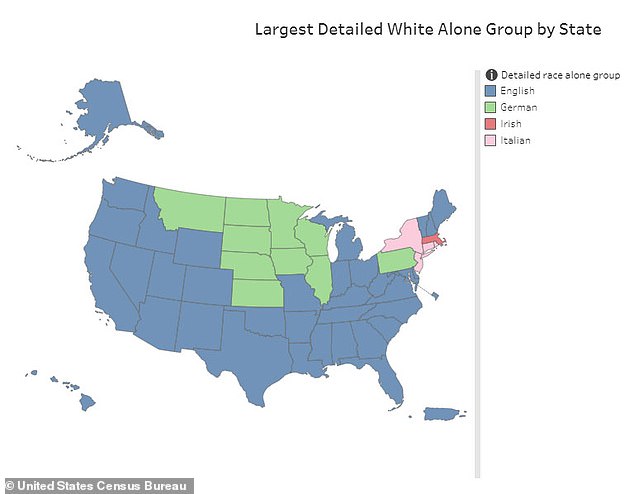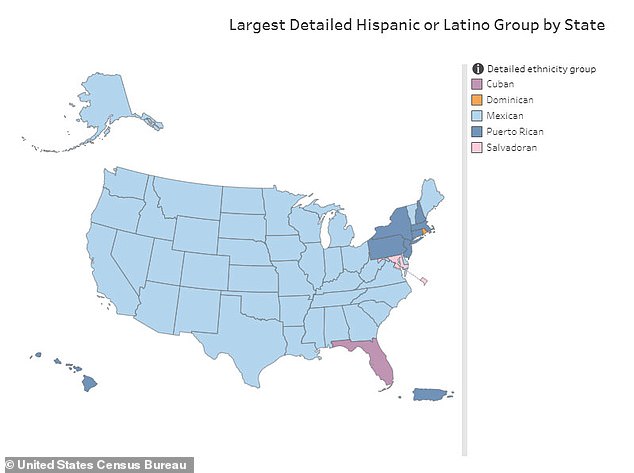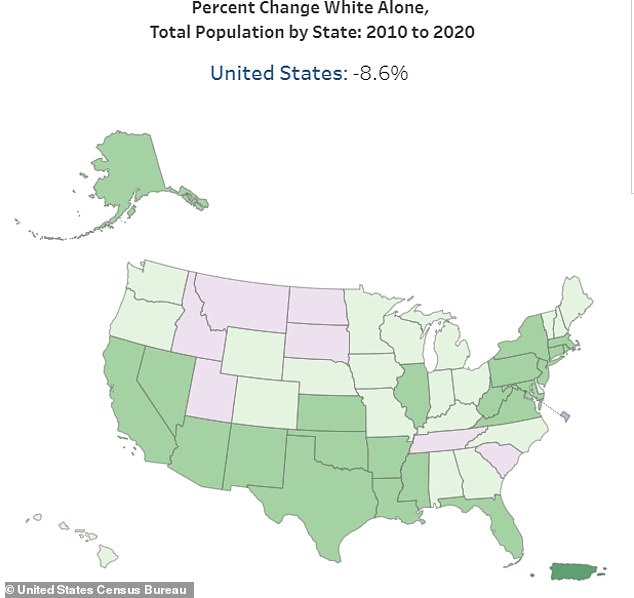Detailed new census data reveals half of the country’s 50M black people say they’re African American while a third of 130M white Americans describe their ethnic background as ENGLISH
Newly released US Census data that provides a more detailed understanding of the specific racial and ethnic breakdown of Americans shows that among the shrinking white population, a third identify as English, and among the black population, only half identify as African American.
The new data was released Thursday, more than three years after the 2020 census, which was severely delayed by the COVID-19 pandemic, as well as new government methods of collecting information intended to protect participant confidentiality.
While the simple count of Americans falling into different racial categories was released in an earlier round of census data disclosure, the new information breaks down the different racial populations by ethnic category.
The country’s black population, which has grown by five and a half percent since 2010 according to previously released data, primarily identifies as African American. However, of the nation’s 46.9 million black respondents, only 24.5 million identified themselves as African American.
The other roughly half of the black population selected backgrounds including Jamaican, Haitian, Nigerian and Ethiopian.
About half of the nation’s black population does not identify as African American, according to U.S. Census Bureau data.

Of the 130 million white Americans, 46.5 million identify fully or partially as English, a similar number to those who categorize themselves as German
Groups with even fewer respondents included those who identified as Congolese, Somali, Liberian and Haitian.
Among the white population in the US, English was the most common detailed group people selected on the form asking for additional background information. About 46.5 million Americans said they were fully or partially English.
The German subcategory came in second. Forty-five million white Americans identify fully or partially as German. Nearly 39 million identify as Irish.
Among the US’s rapidly growing Latin American population, Venezuelans were by far the group with the biggest jump in numbers.
Between 2010 and 2020, Venezuelans went from a U.S. population of 215,000 to more than 605,000. This change is largely due to the economic and humanitarian crisis that occurred during the regime led by President Nicolás Maduro.
Venezuelans were granted temporary protected status in the US, which for many of them will last at least until March next year.
As has been the case for several consecutive censuses, Mexicans were the largest Latin American group in the country with almost 36 million inhabitants. But their percentage share among the Hispanic and Latino population actually fell from 63 percent in 2010 to 57 percent in 2020.
The U.S. Asian population, which numbered about 20 million, was almost equally among a number of subgroups in this category.
More than 5.2 million Americans identified as Chinese. They were followed by Indians, who numbered 4.7 million. There are 4.4 million Filipinos in the US and 2.2 million people who identify as Vietnamese.

As has been the case for several consecutive censuses, Mexicans were the largest Latin American group in the country with a population of almost 36 million people.

According to previous Census data, the number of Americans who identify only as white has shrunk by eight point six percent
Data released earlier this summer showed that for the first time in U.S. history, the number of white people in the country fell.
“If you had told people this would be the case 20 years ago, they wouldn’t have believed you,” says William Frey, a demographer at the Brookings Institution. ‘The country is changing dramatically.’
For five years, updates from the U.S. Census Bureau estimated that the white population was shrinking and that in recent years all population growth had come from minorities.
White people made up about 60 percent of the population in 2019, but Frey said the opioid epidemic and lower-than-expected birth rates among millennials after the Great Recession accelerated the white population’s decline.
The biggest and most steady gains have been among Hispanics, who have doubled their share of the population over the past three decades to nearly 20 percent.
